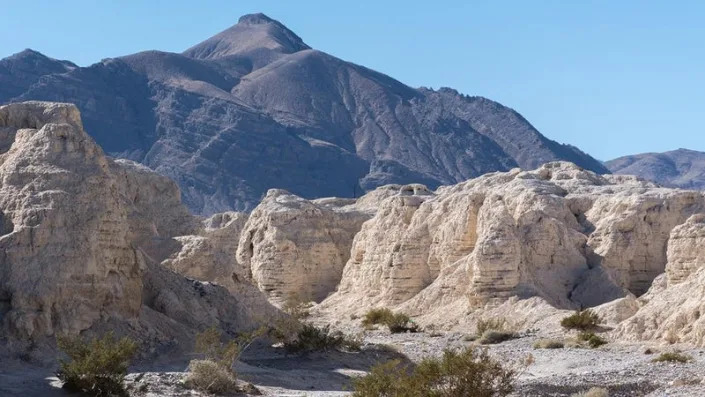LACK OF PLANNING
500-Mile-Long Power Line Hits a Roadblock: Ice Age FossilsIsaac Schultz
Sat, March 4, 2023

Tule Springs Fossil Beds National Monument
A proposal to build a nearly 500-mile-long stretch of transmission line in Nevada has been further delayed due to the discovery of possible fossil deposits in its path.
According to E&E News, an environmental review of the transmission line plan, originally slated to be released in January, may not be made public for a public comment period until May. That’s because the path of the Greenlink West power line, as it’s been proposed by NV Energy, runs through 1.5 miles of Tule Springs Fossil Beds National Monument, established as a National Park Service site in 2014.
The monument contains thousands of fossils from the Pleistocene Epoch, commonly known as the Ice Age. For about 90,000 years—until around 12,500 years ago—the region was full of wetlands that preserved the Pleistocene fauna, from mammoths and saber-toothed cats to familiar creatures like coyotes, jackrabbits, and snails.
The 22,650-acre park sits north of Las Vegas; the transmission line’s 470-mile-long proposed path slices through the monument and from there roughly runs parallel to Nevada’s western border north to the outskirts of Reno.
According to the Bureau of Land Management’s website, “the Greenlink West Project would be a system of new 525-kilovolt (kV), 345-kV, 230-kV, and 120-kV electric transmission facilities on private, state, and federal lands between northern and southern Nevada.”
As it is currently outlined, the power line would take a 1.5-mile-long path through the national park, 5 feet within its borders near a road that cuts the park into two segments.
The NPS cautioned in comments filed to BLM last year that “The construction of the transmission line…will have the potential to impact paleontological resources, including an undetermined number of fossil remains and unrecorded fossil sites,” according to the Public Employees for Environmental Responsibility.
The National Park Service proposed using ground-penetrating radar to detect fossil deposits in the area. Those scans, funded by NV Energy, were completed by Geotech Global Consulting, and the results were published in September. The report described the detection of Pleistocene vertebrate fossils within the national monument.
One scan “exhibited a collection of anomalies that could well be vertebrate fossils,” according to the report, written by Thomas Urban, a research scientist at Geotech Global Consulting. (Urban and colleagues previously used ground-penetrating radar to find human and proboscidean trace fossil beds in White Sands National Monument in New Mexico.)
Another scan conducted on deposits “that exhibited a large amount of small bone fragments eroding out of the surface” detected “a number of anomalies … some of which resemble vertebrate fossils.” A third scan revealed proboscidean tusks poking out of an escarpment.
All told, the deepest scan found possible fossils deeper than 33 feet (10 meters). Because of the uncertainty of what was causing the anomalies, ground-truth observations (and excavations) may be necessary to understand exactly what the power line could disturb, should it go ahead as planned.
As noted by E&E News, the Bureau of Land Management has a smattering of federal and protected lands to navigate, including an Air Force base, Native American tribal sites, and the Desert National Wildlife Refuge, the largest wildlife refuge outside of Alaska.
How BLM and NV Energy plan to navigate the legal quagmire remains to be seen; the public comment period following the environmental review’s eventual release may bring its own suite of complaints.
More: Bones of Mammoths Seemingly Butchered by Humans Found in New Mexico
No comments:
Post a Comment